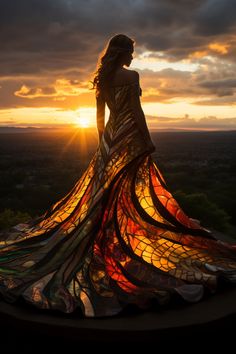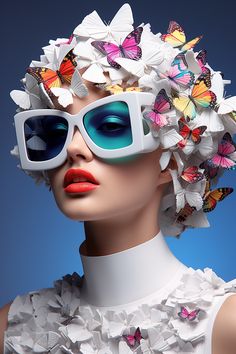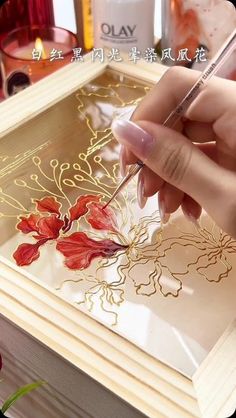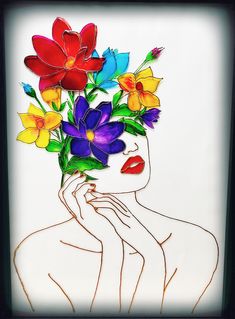Glass Painting 02
Glass painting is a captivating art form that combines creativity, technique, and the unique properties of glass to produce stunning visual effects. This medium has a rich history, evolving through various cultures and styles, and continues to be a popular choice among artists and artisans today. This overview delves into the history, techniques, themes, and contemporary relevance of glass painting.
Historical Background
Origins of Glass Painting

The origins of glass painting can be traced back to ancient civilizations, with some of the earliest examples found in Roman and Byzantine art. The use of glass for decorative purposes became prominent around the 1st century AD, particularly in the creation of stained glass windows. These windows served both functional and aesthetic purposes, allowing natural light to filter into religious spaces while depicting biblical scenes and saints.
Medieval and Renaissance Influences
During the Medieval period, stained glass became an essential element in cathedrals and churches across Europe. The intricate designs often illustrated stories from the Bible, making religious teachings accessible to the largely illiterate population. The craft reached new heights during the Gothic period, with artists mastering the use of color and light to create breathtaking effects.
The Renaissance brought renewed interest in the arts, and glass painting evolved to include more naturalistic and detailed representations. Techniques were refined, and artists began to experiment with different styles and methods, enhancing the overall visual impact of their works.
Techniques of Glass Painting
Stained Glass
Stained glass is perhaps the most recognized form of glass painting. This technique involves painting on glass panels using special paints that are fused into the glass through firing in a kiln. Artists often use multiple layers of paint to achieve depth and complexity. The glass is cut into shapes and assembled using lead came or copper foil to create intricate designs.
Reverse Glass Painting

Reverse glass painting is another popular technique where artists paint on the reverse side of a glass sheet. This method allows the colors to appear vibrant and luminous when viewed from the front. It is commonly used in decorative art and has roots in various cultures, including Asian and European traditions.
Glass Etching
Glass etching involves using acidic substances or sandblasting to create designs on the surface of glass. This technique allows for intricate patterns and textures that can enhance the overall aesthetic of glass pieces. Etching can be combined with painting for added depth and detail.
Fusing and Slumping
Glass fusing involves melting pieces of glass together at high temperatures in a kiln. This technique allows for the creation of unique shapes and designs that can be further painted or decorated. Slumping is a related technique where glass is heated and shaped to fit a mold, often used for creating bowls and dishes with painted designs.
Themes and Motifs
Nature and Spirituality
Glass painting often draws inspiration from nature, with motifs such as flowers, animals, and landscapes frequently featured. These elements can evoke a sense of tranquility and harmony, making them popular choices for decorative pieces.
Spiritual themes are also prevalent, particularly in stained glass art. Many works depict religious figures, scenes, and symbols, serving as both artistic expression and a means of conveying spiritual messages.
Cultural Heritage
Glass painting reflects the cultural heritage of various regions. Different cultures have distinct styles, motifs, and techniques, showcasing their unique traditions. For example, Persian glass painting features intricate floral patterns, while Indian glass painting often incorporates vibrant colors and elaborate designs that tell stories.
Contemporary Glass Painting
Revival and Innovation
In recent years, there has been a revival of interest in glass painting, with contemporary artists exploring new techniques and styles. Many modern artists are blending traditional methods with innovative approaches, creating works that resonate with today’s audiences.
Functional Art

Contemporary glass painters are also creating functional art pieces, such as decorative glassware, lamps, and home décor items. These works often combine aesthetics with usability, making them popular in both art markets and everyday settings.
Community and Workshops
Various organizations and art schools now offer workshops and courses on glass painting, making the art form accessible to a broader audience. These programs encourage individuals of all skill levels to explore their creativity while learning traditional and contemporary techniques.
Environmental Awareness
As awareness of environmental issues grows, many glass artists are incorporating recycled glass and eco-friendly materials into their work. This trend not only promotes sustainability but also inspires creativity in using discarded materials to produce beautiful art pieces.
The Role of Glass Painting in Culture
Personal Expression
Glass painting allows artists to express their individuality and creativity. The medium offers endless possibilities for design and color, enabling artists to experiment and push boundaries. Each piece reflects the artist’s unique perspective and style.
Cultural Preservation
Glass painting serves as a means of preserving cultural heritage. Many artists draw inspiration from traditional motifs and techniques, ensuring that these practices continue to thrive in contemporary art. By keeping these traditions alive, artists contribute to a broader understanding and appreciation of cultural history.
Community Building
Glass painting often fosters a sense of community, as artists come together for workshops, exhibitions, and collaborations. This collective spirit encourages the sharing of knowledge, skills, and ideas, enriching the art form and promoting artistic growth.

Conclusion
Glass painting is a dynamic and multifaceted art form that combines history, technique, and personal expression. Its rich heritage and evolving nature reflect the creativity and innovation of artists across cultures and time periods. As glass painting continues to flourish in contemporary art, it remains a testament to the enduring power of artistic expression and the beauty that can be created through the interplay of light, color, and form. By exploring and appreciating this art form, we celebrate not only the artistry involved but also the cultural narratives and connections that glass painting embodies.